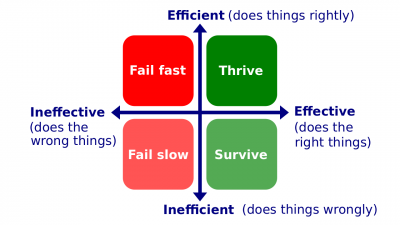Enterprise Architecture Quarter
Enterprise Architecture Quarter (hereinafter, the Quarter) is a lecture introducing the learners to portfolio design primarily through key topics related to enterprise architecture. The Quarter is the third of four lectures of Portfolio Quadrivium, which is the first of seven modules of Septem Artes Administrativi (hereinafter, the Course). The Course is designed to introduce the learners to general concepts in business administration, management, and organizational behavior.
Contents
Lecture outline
Feasibility Study Quarter is the predecessor lecture. In the enterprise analysis series, the previous lecture is Enterprise Intelligence Quarter.
- Portfolio design is the enterprise design of the enterprise portfolio. This lecture concentrates on enterprise architecture because this architecture is the main outcome from this design.
Concepts
- Enterprise architecture. A composition of the interrelated businesses, process assets, enterprise factors, and personnel that together are known as an enterprise.
- Enterprise. An undertaking to create something and/or develop somebody, which takes some level of enterprise effort. In other words, an enterprise is one or more businesses unified in one system. An enterprise can also refer to an organizational unit, organization, or collection of organizations that share knowledge bases and other enterprise resources.
- Sector. The market that a startup companies product or service fits into. Examples include: consumer technology, cleantech, biotech, and enterprise technology. Venture Capitalists tend to have experience investing in specific related sectors and thus tend not to invest outside of their area of expertise.
- Enterprise business. The actual or potential practice of making enterprise's profit by engaging in commerce.
- Business. (1) An individual's regular occupation, profession, or trade; (2) The practice of making one's profit by engaging in commerce.
- Departmentalization. The basis by which jobs in an enterprise are grouped together.
- Portfolio engineering. The application of scientific principles to designing and/or modifying of the enterprise portfolio.
- Engineering. The creative application of science, mathematical methods, and empirical evidence to the innovation, design, construction, operation and maintenance of products, systems, processes, businesses, and enterprises. To simplify, engineering is the application of scientific principles to practical ends.
- Startup business (or, simply, startup). (1) A business in its search of its business model, which usually means ways not to depend on external funding; (2) An enterprise in the early stages of operations. Startups are usually seeking to solve a problem of fill a need, but there is no hard-and-fast rule for what makes a startup since situations differ. Often, a company is considered a startup until they stop referring to themselves as a startup.
- Operational business. Any business, which business model generates revenue.
- Innovation. Taking change ideas and turning them into new products, product features, production methods, pricing strategies, and ways of enterprise administration.
- Sustaining innovation. Small and incremental changes in established products rather than dramatic breakthroughs.
- Disruptive innovation (or disruption). Innovations in products or processes that radically change existing markets including an industry's rules of the game.
- Exit strategy. A business strategy that seeks to withdraw an enterprise out of a particular business at the lowest cost and biggest gain. With regard to startup businesses, this is how their founders usually get rich. An exit strategy is the method by which an investor and/or entrepreneur intends to "exit" their investment in a company. Commons options are an IPO or buyout from another company. Entrepreneurs and venture capitalists often develop an exit strategy while the startup business is still growing.
- Buyout. A common exit strategy. The purchase of a company's shares that gives the purchaser controlling interest in the company.
- Liquidation. The process of dissolving a company by selling off all of its assets (making them liquid).
- IPO. Initial public offering. The first time shares of stock in a company are offered on a securities exchange or to the general public. At this point, a private company turns into a public company (and is no longer a startup).
- Harvesting. Exiting a venture when an entrepreneur hopes to capitalize financially on the investment in the future.
Roles
- Enterprise architect. A practitioner of enterprise architecture.
Instruments
- BCG matrix. A strategy tool that guides resource allocation decisions on the basis of market share and growth rate of strategic business units.
Results
- Enterprise portfolio. A collection of all businesses in which a particular enterprise operates.
- Portfolio. A range of investments held by a legal entity, an individual or organization.
Practices
Iterative Development Quarter is the successor lecture. In the enterprise design series, the next lecture is Business Modeling Quarter.

